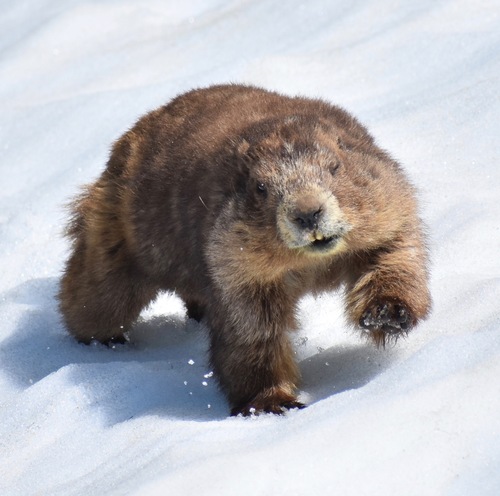
Olympic Marmot
The Olympic marmot, Marmota olympus, thrives in Washington's alpine meadows. Notably social, it communicates with distinctive whistles. This burrowing herbivore plays a crucial role in ecosystem dynamics, aerating soil and dispersing seeds, while its vibrant presence enriches the mountain vistas.
7.983 kg
Weight
Length: 66 - 76 cm
Size
Brown, Dark
Color
3-4 years
Age of Sexual Maturity
2 years
Age of Weaning
Medium
Aggression
Least Concern
Conservation Status
Decreasing
Population Trend
Characteristics
Marmota olympus, known as the Olympic marmot, is native to the Olympic Mountains in Washington, USA. It inhabits alpine and subalpine meadows, known for its social behavior and loud whistling calls. This species hibernates for up to eight months, emerging in spring to raise young. Its thick fur helps it withstand cold mountain climates.
Distribution Range of the Olympic Marmot
Marmota olympus, commonly known as the Olympic marmot, is native to the Olympic Peninsula in the state of Washington, USA. This species is endemic to this region and is not naturally found anywhere else in the world.
Olympic Marmot's Habitat
Environmental Conditions
The Olympic marmot inhabits alpine and subalpine meadows at elevations typically ranging from 1,500 to 2,000 meters (4,900 to 6,600 feet). The climate in these areas is characterized by cool summers and cold, snowy winters. The meadows are often lush with grasses and wildflowers during the warmer months, providing ample food sources.
Ecological Niche
Olympic marmots are herbivorous and primarily feed on a variety of alpine plants, including grasses, herbs, and flowers. They play a crucial role in their ecosystem by influencing plant community dynamics and serving as prey for predators such as coyotes and golden eagles. Their burrowing behavior also contributes to soil aeration and nutrient cycling in their habitat.
Copyright @ Nature Style Limited. All Rights Reserved.
 English
English